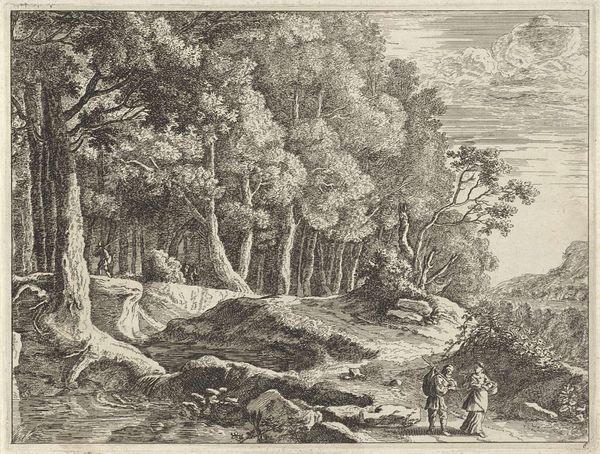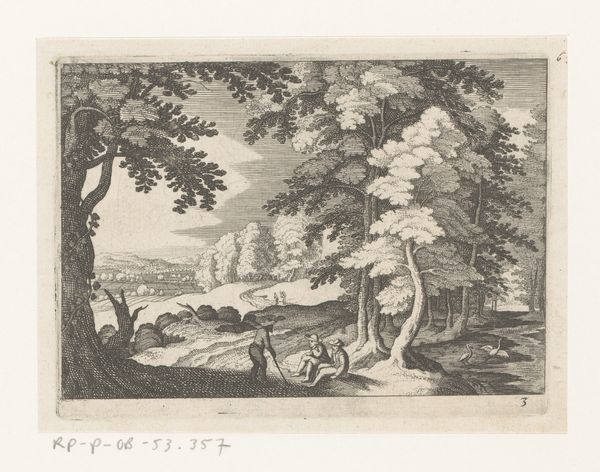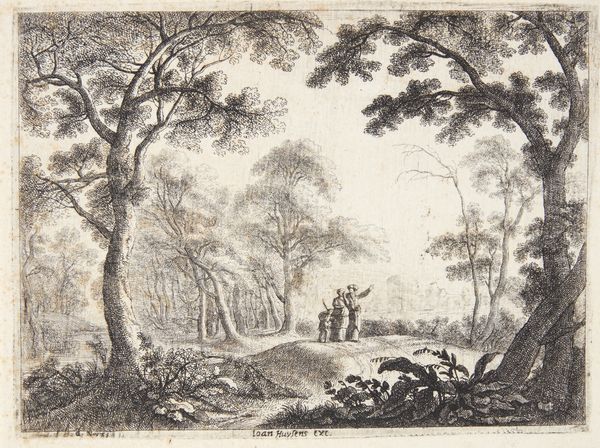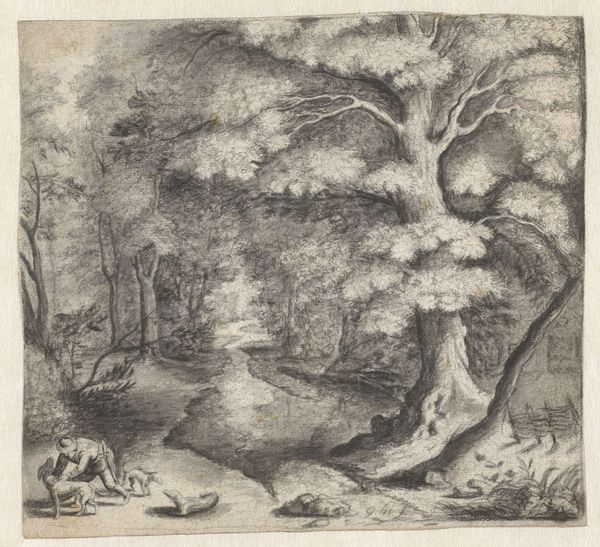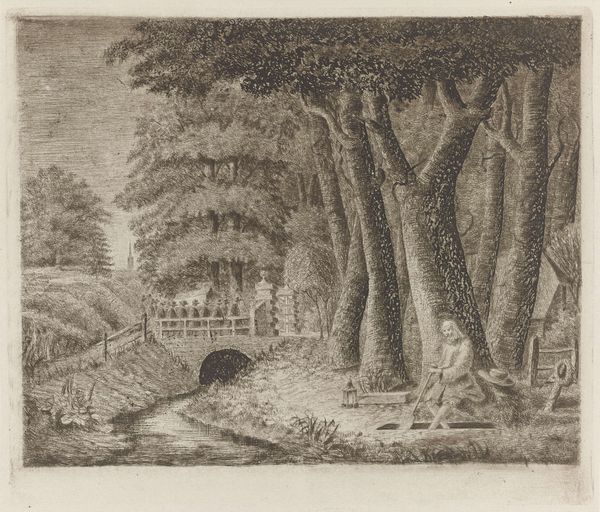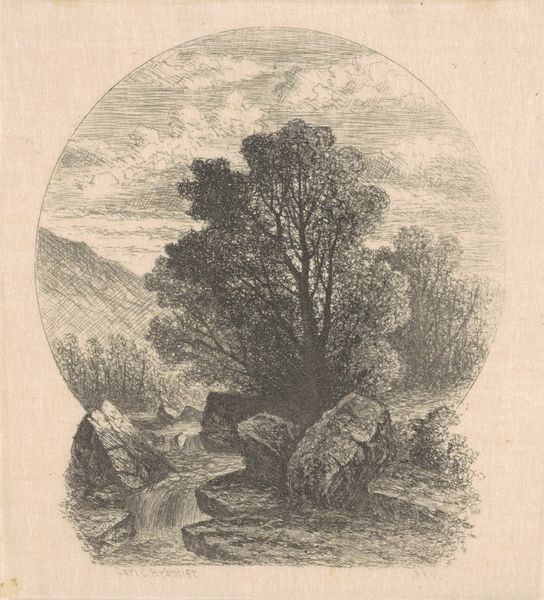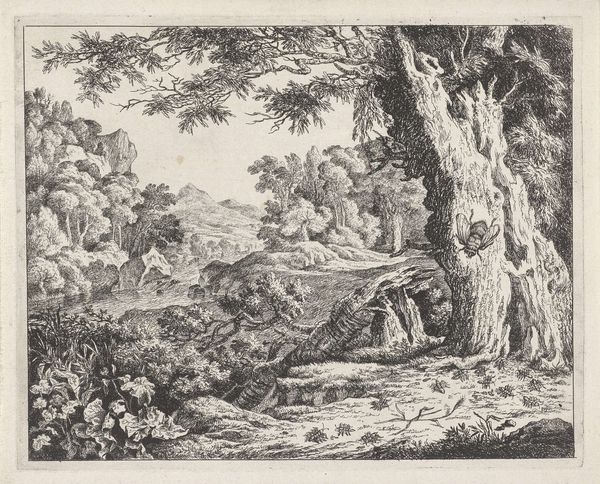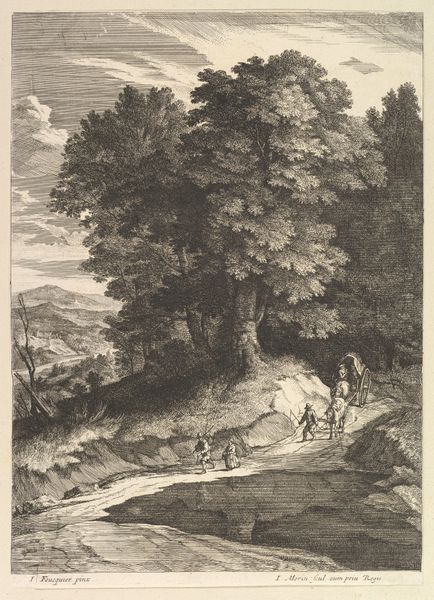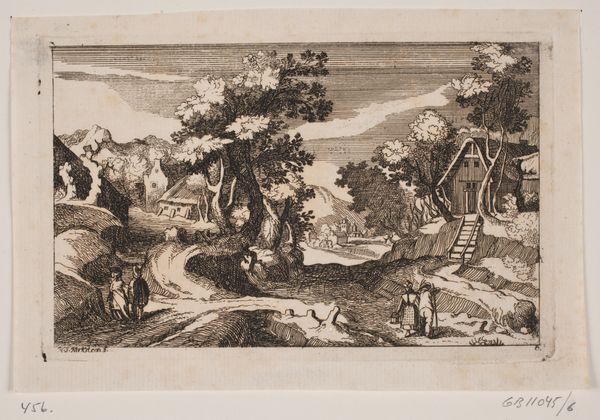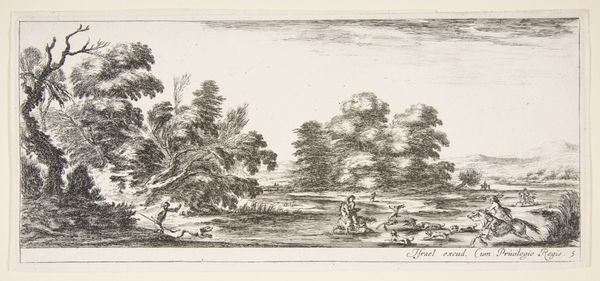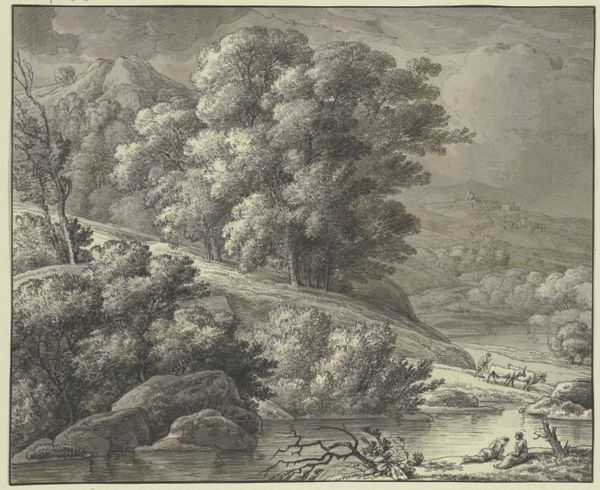
drawing, print, etching
#
drawing
# print
#
pen sketch
#
etching
#
landscape
#
pencil drawing
#
romanticism
Dimensions: 162 mm (height) x 210 mm (width) (bladmål)
Curator: This is "Landskab med et vandløb," or "Landscape with a Watercourse," a print from around 1800 by Nina Spielmann. Editor: It's wonderfully intricate! The texture, especially in the trees, creates such a dreamy, almost melancholic atmosphere. The etching has such fine detail; it's remarkable. Curator: Spielmann employed an etching technique, creating fine lines on a metal plate that would then be inked and printed. I am curious how access to these materials, and training to use them, impacted women artists' limited involvement in the wider artistic arena at the time. Did the portability and relatively lower cost of printmaking influence Nina Spielmann's choice of art medium? Editor: That’s a very good point about material access affecting who got to participate in art making. Looking closely, notice how the lines define the forms: short, quick strokes suggest foliage, while longer, curving lines describe the flow of the water. Curator: The figures blend with the scenery. Note, too, the subtle class distinctions visible in clothing that identify manual labourers contrasted against others leisurely resting. We get an intriguing snapshot into early 19th-century social and working relations amid industrial development, but how does Spielmann perceive these realities? Is this objective reporting or does Spielmann make value judgments via composition and form? Editor: Perhaps it is Romanticism influencing the artist's perspective because she blurs any distinction through uniform treatment. Formally, the way the bridge echoes the curve of the watercourse, subtly drawing the eye through the scene, it shows unity rather than separation. The distribution of dark and light areas contributes significantly to the work’s impact, and one finds a real feeling of peace despite so much detail. Curator: To take it one step further, how would it have been circulated at the time? Who were the likely buyers, and what would this art have meant in the domestic spaces of Denmark? These prints circulated not just art, but specific views on nature and labour at a pivotal point in Danish history. Editor: A beautiful, engaging print! I appreciated analyzing the aesthetic elements to consider its overall design. Curator: And, I hope we’ve given our listeners new lenses to understand both the historical and social contexts, including labor relations in this piece.
Comments
No comments
Be the first to comment and join the conversation on the ultimate creative platform.
